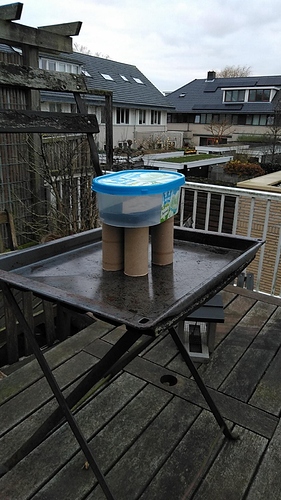I tested this. The L5 can get a fix in this configuration. But also when the with the screen down 10 cm above the baking plate.
It is quite difficult to exactly determine how all factors influence each other, but I think that the following statements are true:
- Screen down works better than screen up;
- With metal oven baking plate is better than without it;
- 10 cm above metal oven baking plate is better than directly on top of it.
It seems that the best results are obtained by having the L5 screen down, 10 cm above the metal over baking place (and outside, obviously).
When I have the seemingly optimal configuration inside at the top level of my house, some satellites do show a s/n value, but I did not get a 3D fix.
Also note: when the L5 has a 3D fix, which I monitor with this line:
sudo socat unix-client:/var/run/gnss_share.sock - | grep -aE --line-buffered '^\$GNGSA,[DANE],[1-3],[0-9]{2}'
It looks like it can hold the fix when putting the L5 in less optimal positions. When I then stop the command with CTRL-C, but keep the phone in the less optimal position, the L5 cannot establish a 3D fix again. So, I think that somehow the L5 can sometimes maintain a 3D fix in a location where it cannot freshly establish a 3D fix.
Are there any L5 owners that can always easily get and maintain a 3D fix when outside, without applying special configurations?
